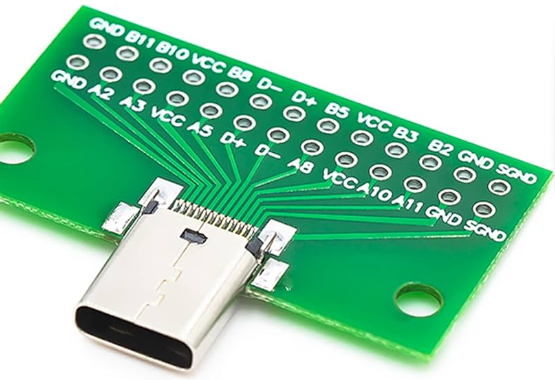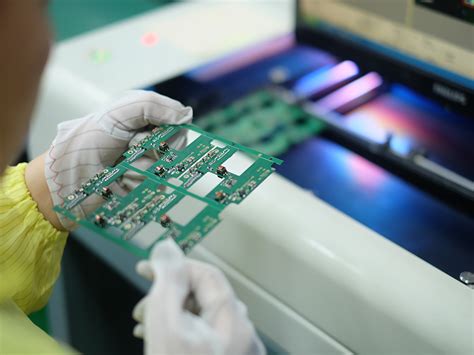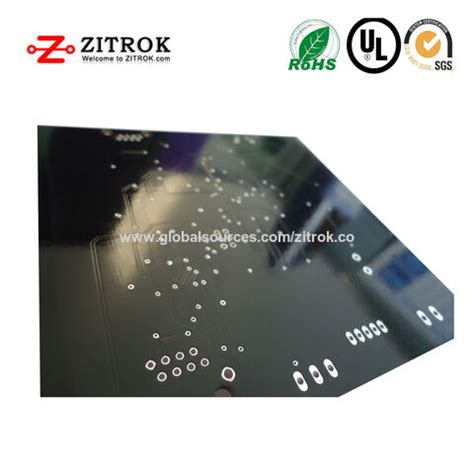Usa pcb prototype
Top USA PCB Prototype Manufacturers: A Comprehensive Guide
The landscape of printed circuit board (PCB) manufacturing in the United States is both diverse and advanced, with numerous companies offering top-tier prototype services. These manufacturers play a crucial role in the electronics industry, providing the essential groundwork for innovations in various sectors, including telecommunications, medical devices, automotive, and consumer electronics. Understanding the key players in the USA PCB prototype market can help businesses and engineers make informed decisions when selecting a partner for their projects.
One of the leading names in the industry is Advanced Circuits, known for its high-quality PCB prototypes and quick turnaround times.
With over 30 years of experience, Advanced Circuits has established itself as a reliable provider, offering a range of services from standard PCBs to complex multi-layer boards. Their commitment to quality is evident in their rigorous testing procedures and adherence to industry standards, making them a preferred choice for many engineers and designers.
Transitioning to another significant player, Sunstone Circuits stands out for its user-friendly online platform and exceptional customer service.
Sunstone Circuits has been a pioneer in the PCB industry, providing innovative solutions that cater to both novice and experienced designers. Their online tools simplify the ordering process, allowing for easy customization and rapid prototyping. This focus on accessibility and efficiency has earned them a loyal customer base and a strong reputation in the market.
Similarly, Sierra Circuits is renowned for its comprehensive suite of services, which includes PCB design, fabrication, and assembly.
Sierra Circuits prides itself on its ability to handle complex projects with precision and speed. Their state-of-the-art facilities and experienced team ensure that each prototype meets the highest standards of quality and performance. By offering end-to-end solutions, Sierra Circuits provides a seamless experience for clients, from initial design to final product.
Another noteworthy manufacturer is Tempo Automation, which leverages advanced software and automation to deliver rapid PCB prototypes.
Tempo Automation’s approach is centered around reducing lead times and increasing accuracy through digital manufacturing techniques. This innovative methodology allows for quick iterations and adjustments, making it ideal for projects that require fast development cycles. Their emphasis on speed and precision has positioned them as a leader in the PCB prototyping space.
In addition to these established companies, smaller firms like Bay Area Circuits also make significant contributions to the industry.
Bay Area Circuits focuses on providing personalized service and attention to detail, catering to the specific needs of each client. Their flexibility and willingness to accommodate custom requests make them a valuable partner for specialized projects. Despite their smaller size, Bay Area Circuits maintains high standards of quality and reliability, ensuring that each prototype meets the client’s exact specifications.
Moreover, companies like PCBWay have gained recognition for their competitive pricing and global reach.
While based in China, PCBWay has a strong presence in the USA market, offering cost-effective solutions without compromising on quality. Their extensive range of services and commitment to customer satisfaction have made them a popular choice among budget-conscious clients seeking reliable PCB prototypes.
In conclusion, the USA PCB prototype market is characterized by a diverse array of manufacturers, each offering unique strengths and capabilities. From industry giants like Advanced Circuits and Sunstone Circuits to innovative firms like Tempo Automation and specialized providers like Bay Area Circuits, there is no shortage of options for businesses and engineers seeking high-quality PCB prototypes. By understanding the distinct advantages of each manufacturer, clients can make informed decisions that align with their specific project requirements and goals.

The Benefits Of Choosing USA-Based PCB Prototyping Services
Choosing USA-based PCB prototyping services offers numerous advantages that can significantly impact the quality, efficiency, and overall success of your electronic projects. One of the primary benefits is the assurance of high-quality standards. American companies are often subject to stringent regulations and industry standards, ensuring that the printed circuit boards (PCBs) produced are of superior quality. This adherence to high standards minimizes the risk of defects and enhances the reliability of the final product.
Moreover, opting for domestic PCB prototyping services can lead to faster turnaround times.
Proximity plays a crucial role in reducing shipping times and facilitating quicker communication between the client and the manufacturer. This is particularly beneficial during the prototyping phase, where iterative testing and modifications are common. The ability to rapidly implement changes and receive updated prototypes can significantly accelerate the development process, allowing for a more efficient path to market.
In addition to speed, choosing a USA-based service provider can also offer better customer support.
Local companies are more likely to provide personalized service and be readily available to address any concerns or issues that may arise. This level of support can be invaluable, especially when dealing with complex designs or tight deadlines. The ease of communication, coupled with the ability to have face-to-face meetings if necessary, fosters a collaborative environment that can lead to more innovative and effective solutions.
Furthermore, working with a domestic PCB prototyping service can enhance intellectual property (IP) protection.
The United States has robust IP laws that safeguard the proprietary designs and innovations of companies. By keeping the prototyping process within the country, businesses can reduce the risk of IP theft or infringement, thereby protecting their competitive edge in the market.
Cost considerations also play a significant role in the decision-making process.
While it may seem that overseas manufacturing offers lower costs, hidden expenses such as shipping fees, tariffs, and potential rework due to quality issues can quickly add up. Additionally, the time lost in transit and communication delays can further inflate the overall cost. By choosing a USA-based service, companies can often achieve a more predictable and transparent cost structure, ultimately leading to better budget management.
Another critical aspect is the environmental impact.
Many American PCB manufacturers are committed to sustainable practices and adhere to environmental regulations that may not be as stringent in other countries. By supporting these companies, businesses can contribute to reducing their carbon footprint and promoting eco-friendly practices within the industry.
Lastly, the economic benefits of choosing domestic services should not be overlooked.
Supporting local manufacturers helps to bolster the national economy, create jobs, and foster innovation within the country. This, in turn, can lead to a more robust and resilient supply chain, benefiting not only individual companies but the industry as a whole.
In conclusion, the benefits of choosing USA-based PCB prototyping services are multifaceted, encompassing quality, speed, customer support, IP protection, cost efficiency, environmental responsibility, and economic impact. By carefully considering these factors, businesses can make informed decisions that align with their strategic goals and contribute to their long-term success.

Innovations In USA PCB Prototyping: What To Expect In 2024
The landscape of printed circuit board (PCB) prototyping in the United States is poised for significant advancements in 2024, driven by a confluence of technological innovations and industry demands. As the backbone of modern electronics, PCBs are integral to the functionality of a myriad of devices, from consumer electronics to sophisticated aerospace systems. Consequently, the evolution of PCB prototyping is not merely a matter of incremental improvements but a critical factor in the broader technological ecosystem.
One of the most notable trends expected in 2024 is the increased adoption of advanced materials.
Traditional PCB materials, such as FR4, have served the industry well for decades. However, the push for higher performance and greater reliability is leading to the exploration of alternative substrates. Materials like polyimide and ceramic composites are gaining traction due to their superior thermal stability and electrical properties. These materials enable the creation of PCBs that can withstand harsher environments and operate at higher frequencies, which is particularly beneficial for applications in the automotive and aerospace sectors.
In tandem with material advancements, the integration of additive manufacturing techniques is set to revolutionize PCB prototyping.
Additive manufacturing, or 3D printing, allows for the rapid production of complex PCB designs that would be challenging or impossible to achieve with traditional subtractive methods. This technology not only accelerates the prototyping process but also reduces waste and lowers costs. As 3D printing technology continues to mature, it is expected to become a staple in PCB prototyping labs across the United States, offering designers unprecedented flexibility and speed.
Moreover, the rise of artificial intelligence (AI) and machine learning (ML) is transforming the way PCBs are designed and tested.
AI-driven design tools can optimize PCB layouts for performance and manufacturability, significantly reducing the time required for design iterations. Machine learning algorithms can predict potential failure points and suggest design modifications, enhancing the reliability of the final product. These intelligent systems are particularly valuable in the prototyping phase, where rapid feedback and iteration are crucial.
Another critical development on the horizon is the enhancement of testing and validation processes.
As PCBs become more complex, ensuring their functionality and reliability before full-scale production is paramount. Innovations in automated testing equipment and techniques are making it possible to conduct more thorough and accurate assessments of prototype boards. For instance, advancements in X-ray inspection and automated optical inspection (AOI) technologies are enabling the detection of minute defects that could compromise the performance of the PCB. These improvements in testing methodologies are essential for maintaining high standards of quality and reliability.
Furthermore, the increasing emphasis on sustainability is influencing PCB prototyping practices.
The electronics industry is under growing pressure to reduce its environmental footprint, and PCB manufacturing is no exception. In 2024, we can expect to see more eco-friendly practices being adopted, such as the use of lead-free solder and the implementation of recycling programs for PCB materials. These initiatives not only contribute to environmental conservation but also align with the corporate social responsibility goals of many companies.
In conclusion, the year 2024 promises to be a transformative period for PCB prototyping in the United States. With advancements in materials, additive manufacturing, AI-driven design, enhanced testing methodologies, and sustainable practices, the industry is set to achieve new heights of innovation and efficiency. These developments will not only improve the performance and reliability of PCBs but also accelerate the pace of technological progress across various sectors. As we look forward to these exciting changes, it is clear that the future of PCB prototyping is bright and full of potential.

How To Select The Best USA PCB Prototype Service For Your Project
Selecting the best USA PCB prototype service for your project is a critical decision that can significantly impact the success of your electronic product development. The process involves several key considerations, each of which plays a vital role in ensuring that your prototype meets the required standards and functions as intended. To begin with, it is essential to evaluate the technical capabilities of the PCB prototype service provider. This includes assessing their ability to handle the specific requirements of your project, such as the complexity of the circuit design, the number of layers, and the types of materials used. A provider with advanced technological capabilities and a proven track record in handling similar projects will be better equipped to deliver a high-quality prototype.
In addition to technical capabilities, the experience and expertise of the service provider are paramount.
Companies with extensive experience in the industry are more likely to have encountered and resolved a wide range of challenges, thereby ensuring a smoother and more efficient prototyping process. It is advisable to review the provider’s portfolio and seek testimonials or references from previous clients to gauge their reliability and proficiency.
Another crucial factor to consider is the turnaround time.
In the fast-paced world of electronics, time-to-market can be a decisive factor in the success of a product. Therefore, selecting a PCB prototype service that can deliver within your required timeframe without compromising on quality is essential. It is beneficial to discuss the expected delivery schedule upfront and ensure that the provider has the necessary resources and processes in place to meet deadlines consistently.
Cost is also a significant consideration when choosing a PCB prototype service.
While it is tempting to opt for the lowest-priced option, it is important to balance cost with quality. A low-cost provider may cut corners, leading to subpar prototypes that could result in costly revisions and delays. Instead, focus on finding a service that offers a reasonable price while maintaining high standards of quality and reliability. Requesting detailed quotes and comparing them based on the scope of services provided can help in making an informed decision.
Furthermore, the level of customer support offered by the PCB prototype service is an important aspect to consider.
Effective communication and support throughout the prototyping process can make a substantial difference in addressing any issues that may arise and ensuring that the project stays on track. A provider that offers dedicated support and is responsive to inquiries and feedback will likely contribute to a more positive and productive collaboration.
Additionally, it is beneficial to consider the geographical location of the PCB prototype service.
Opting for a provider based in the USA can offer several advantages, including shorter shipping times, easier communication, and the assurance of compliance with local regulations and standards. This can be particularly important for projects that require quick iterations and close collaboration between the design and manufacturing teams.
Lastly, it is prudent to assess the quality control measures implemented by the PCB prototype service. Rigorous testing and inspection processes are essential to ensure that the prototype functions correctly and meets all specified requirements. Inquiring about the provider’s quality assurance protocols and certifications can provide insight into their commitment to delivering reliable and high-quality prototypes.
In conclusion, selecting the best USA PCB prototype service for your project involves a comprehensive evaluation of technical capabilities, experience, turnaround time, cost, customer support, geographical location, and quality control measures. By carefully considering these factors, you can make an informed decision that will contribute to the successful development and timely launch of your electronic product.






